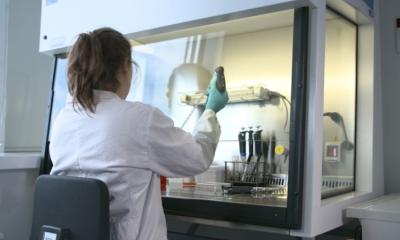Diabetes
Friendly Fire in the Pancreas
n type 1 diabetes, the body attacks its own insulin-producing cells. Scientists at Helmholtz Zentrum München, partner in the German Center for Diabetes Research, and their colleagues at Technical University of Munich have now reported in the journal ‘PNAS’ about a mechanism used by the immune system to prepare for this attack. They were able to inhibit this process through targeted intervention and are now hoping this will lead to new possibilities for treatment.

Type 1 diabetes is an autoimmune disease in which the body destroys its own beta cells in the pancreas.* Researchers are still seeking to find out what causes this malfunction of the immune system in order to intervene therapeutically in the processes. A team led by Dr. Carolin Daniel, group leader at the Institute of Diabetes Research (IDF) of Helmholtz Zentrum München, has now discovered a further piece in solving this puzzle.
“For the first time, we were able to show that in the affected children an increased number of specific immune cells are found in the blood at the beginning of the autoimmune response,” said Daniel. She and her team had previously analyzed blood samples of children in a biobank established by Professor Anette-Gabriele Ziegler, director of the IDF, within the framework of large-scale cohort studies.
According to the authors, these special immune cells are so-called insulin-specific T follicular helper cells (TFH). They appear in the lymph nodes, among other organs, and initiate attacks of the immune system by promoting the production of antibodies by B cells. Now the scientists have found increased frequencies of these cells in samples of children with recent onset of islet cell autoimmunity – an early stage of type 1 diabetes.
In the search for the causes of the increase in TFH cells during autoimmune activation in children, the scientists discovered a previously unknown signaling pathway. “Our analyses showed that a molecule called miRNA92a** triggers a chain of molecular events, which ultimately leads to the increase in these immune cells,” said IDF doctoral student Isabelle Serr, explaining the complex mechanism. “In particular, during this process, miRNA92a interferes with the formation of important signaling proteins such as KLF2 and PTEN.”
Use in therapy and diagnostics
To check whether this newly discovered mechanism is suitable for therapeutic intervention, the scientists investigated the effect of a so-called antagomir, which specifically binds to miRNA92a molecules and blocks their effect. In an experimental model of type 1 diabetes and in the humanized model, this treatment resulted in a significantly lower autoimmune response.
“The targeted inhibition of miRNA92a or the downstream signaling pathway could open up new possibilities for the prevention of type 1 diabetes,” said Professor Ziegler. "Furthermore, the insulin-specific TFH cells could serve as biomarkers to determine the treatment success of the insulin vaccinations we perform."
Publication:
Serr, I. et al. (2016). miRNA92a targets KLF2 and PTEN signaling to promote human T follicular helper precursors in T1D islet autoimmunity, , DOI: 10.1073/pnas.1606646113
Source: Helmholtz Zentrum München
31.10.2016











